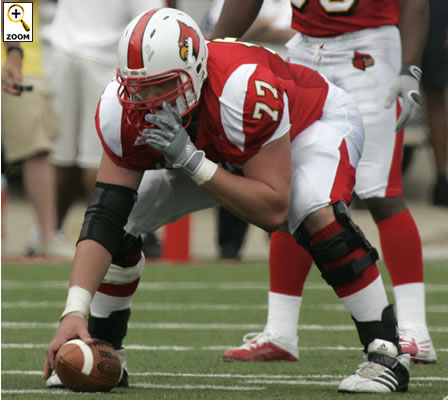
You can feel it in the dugout. It not only changes the rhythm of the day, but the rhythm of the week and the month. Once, every five days, you have a better chance to win than the other team. As a player, it is energizing and necessary, especially through the long months of the baseball season. This is the reason the Yankees paid so much for C. C. Sabathia this past off-season, and why the Royals are suddenly relevant again with the presence of the emerging Zach Greinke, the recent Sports Illustrated cover boy. Greinke beat the Blue Jays for his fifth win of the season the other night. In so doing, he surrendered his first two earned runs of the season.
Anyone who has ever played the game understands the importance of pitching and the value in having one "super pitcher." Unfortunately, that isn't always true of broadcasters and writers, many of whom were simply not athletic enough to make their high school teams. Bob McCown, the FAN590's main voice during the week (And an excellent broadcaster), has at times suggested the Blue Jays trade Roy Halladay. "Blow it up and get what you can for him." It a suggestion so ridiculous and 'unbaseball' it is almost impossible to deconstruct. Kind of like attacking Yogi Berra quotes. Where do you start?
The best thing about the Blue Jays' hot start is that they will not be contemplating trading one of the best two pitchers in baseball for the next little while at least. Halladay is signed through 2010, and at thirteen million per year (3 years for forty million), is the best bargain in baseball. Unfortunately, I'm not sure how many Blue Jay fans realize that pitchers like Halladay are rare, and while he continues to build his Hall of Fame credentials, he will have to contend with the uneducated and ridiculous notions by members of the media who have never played the game.
Greinke, the object of a good New York Times article, has single handedly turned the Royals into a dangerous team. Who wants to face the Royals, long a laughingstock in the league, for a three game series with Greinke pitching one of those games? Suddenly the pressure is on the opponent, and as we've seen this past week, the Royals were able to force the red hot Jays to submit. Without their own Ace going, the Jays lost their first series of the year.
Tomorrow, Halladay will take the hill for the Jays, and don't believe that the Orioles aren't thinking about it. It's what an Ace gives you, and why any notions of trading Halladay reveal a dangerous ignorance about the game.
-Steve




